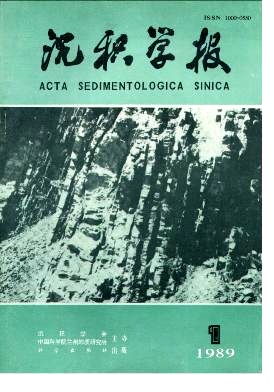Sun Jianzhong, Li Huhou. DEPOSITIONAL RATE OF THE MALAN LOESS AND ITS GEOLOGICAL SIGNIFICANCE[J]. Acta Sedimentologica Sinica, 1989, 7(1): 109-116.
| Citation:
|
Sun Jianzhong, Li Huhou. DEPOSITIONAL RATE OF THE MALAN LOESS AND ITS GEOLOGICAL SIGNIFICANCE[J]. Acta Sedimentologica Sinica, 1989, 7(1): 109-116.
|
DEPOSITIONAL RATE OF THE MALAN LOESS AND ITS GEOLOGICAL SIGNIFICANCE
- 1.
Institute of geology. State Seismological Bureau, Beijing;
- 2.
Institute of Archaeology, Chinese Academy of Social Sciences
- Received Date: 1986-12-15
- Publish Date:
1989-03-10
-
Abstract
Malan loess section in Heimugou location of Luochuan County, Shaanxi Province, has been studied. From the top of the section at 2.56m to the end at 10.36m, we collected samples by intervals of 20cm, total 40 samples were collected. The samples were dated by thermoluminescent(TL) method. Depositional rate of the Malan loess and the regularity of its variation as well as its geological significance are discussed in the paper. Average depositional rate of the Malan loess for whole section is 0.078mm/ a. According to the variation in the depositional rate, the section can be divided into three horizons. Horizon 1 is in interval 2.56-3.56m, with its average dipositional rate of 0.091mm/ a. Horizon 2 is in interval 3.56-7.76m with average depositional rate of 0.35mm / a. Horizon 3 is in interval 7.76-10.36m, with average depositional rate 0.058mm / a. The variation of dcpositional rate has following geological significance. (1) Depositional rate of the Malan loess is closely related to the grain size. The grain of the lower part is coarse, well graded the depositional rate is least. The grain of middle part is fine, not well graded, the dcpositional rate is higher.The upper part is similar to the lower part. (2) The depositional rate of the Malan loess is somewhat correlated to the distrbution and character of10Be concentration along the cross section. The average 10Be precipitation rate in the middle part is highest. The dcpositional rate or loess in this layer is also highest. But the average depositional rate of loess in the upper and lower parts is lowest, the average10Be precipitaion rate is also lowest. 10Be camefrom the atmosphere and absorbed by aerosol, and then reached the earth's surface by rainfall and dustfalls. Finegrained aerosol probable more absorbed 10Be and its precipitation rate is higher than the coarse grains, so the 10Be concentration in fine grains is higher than in coares. (3) The variation of the depositional rate of the loess depends on the climatic evolution. from Zhang Deer, the more dry and arid the climate, the more frequent the precipitation of the loess. The loess has also deposited during cold climate. On the contrary, the warm and humid climate did not favorable to loess dcposite. The locss-palcosoil sequence reflects climatic cycle in that time. Cold-warm and dry -humid climates alternated frequently. The climatic change reflected by loess-palcosoil sequence was in large scale and long inter time. Authors call it the first-ordcd indicator of paleoclimatic change. The paleoclimatic change reflected by depositional rate is called second-order indicator of the paleoclimatic change, because it is a change in the loess of sub-order stratigraphic unit. The high depositional rate was during the dry-cold climate and deositional rate is lower during the warm-humid climate.
-
References
|
[1]
|
刘东生等.1964,黄河中游黄土,科学出版社 |
|
[2]
|
刘东生等.1965.中国的黄土堆积,科学出版社 |
|
[3]
|
刘东生等.1966.黄土的物质成分的结构,科学出版 |
|
[4]
|
刘东生等,1986.黄土与环境.科学出版社 |
|
[5]
|
李虎侯、孙建中.1986.中国科学.B辑,1期,66-73页 |
|
[6]
|
李虎候.1986,科学通报,5期.372-375页 |
|
[7]
|
李虎侯.1982,地球化学.1期,82-84页 |
|
[8]
|
孙建中、李虎侯.1985,地震地质,2期.10-12页 |
|
[9]
|
孙建中、李虎侯,1986.地层学杂志.3期.221页 |
|
[10]
|
沈承德,1985.地球化学文集.科学出版社 |
|
[11]
|
张德二,1984.科通报.27期,2494-297页 |
|
[12]
|
张德二.1984,中国科学.B辑,3期.278-288页 |
-
-
Proportional views

-






 DownLoad:
DownLoad: